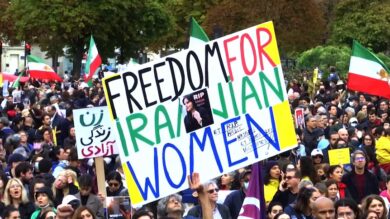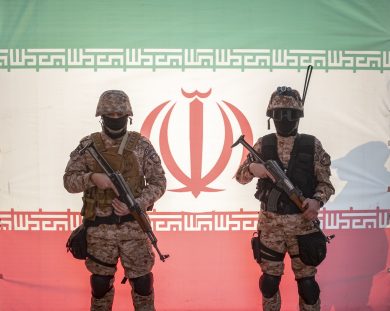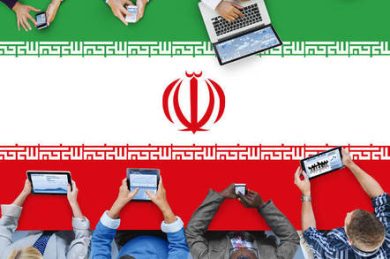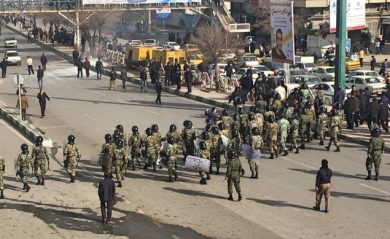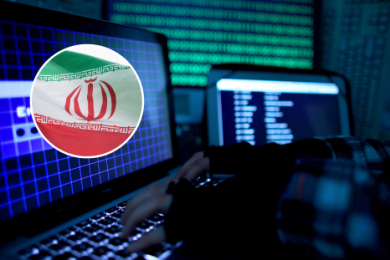The slogan “Women, Life, Freedom” has become synonymous with Iran’s feminist revolution, ignited by the tragic death of Mahsa Amini in September 2022 while in the custody of Iran’s morality police. This movement, rooted in the long-standing fight for gender equality and human rights, has transcended Iran’s borders, inspiring a global wave of solidarity and feminist advocacy. It represents a powerful challenge to authoritarianism, patriarchy, and systemic oppression, resonating with activists, leaders, and communities worldwide.
This article examines the origins of the “Women, Life, Freedom” movement, its impact within Iran, and how it has galvanized international action, reshaping global feminist and human rights struggles.
1. The Origins of “Women, Life, Freedom”
A. Kurdish Feminist Roots
• The slogan “Jin, Jiyan, Azadi” (Women, Life, Freedom) originated in the Kurdish feminist movement, symbolizing the fight for gender equality and liberation from patriarchy.
• Its adoption in Iran highlights the intersectionality of the movement, bringing together struggles for women’s rights and the rights of ethnic minorities.
B. Catalyst: The Death of Mahsa Amini
• Mahsa Amini’s death after being detained for allegedly violating hijab laws became a symbol of systemic gender-based oppression in Iran.
• Protests quickly spread across the country, led by women publicly defying mandatory dress codes and demanding fundamental freedoms.
C. Broader Historical Context
• The movement builds on decades of Iranian women’s resistance against discriminatory laws, social restrictions, and state violence.
• Women’s participation in Iran’s political and social movements, from the Constitutional Revolution to the 1979 Islamic Revolution, laid the foundation for today’s feminist revolution.
2. The Feminist Revolution Within Iran
A. Defiance of Patriarchal Laws
• Hijab Protests: Women burning their hijabs and cutting their hair became powerful symbols of defiance against mandatory dress codes and state-imposed morality.
• Systemic Inequalities: Protesters also highlight broader issues such as unequal inheritance laws, restrictions on employment, and lack of political representation.
B. Intersectionality in Action
• The movement has unified diverse groups, including Kurds, Balochs, and other ethnic minorities, who face compounded discrimination.
• It addresses not only gender inequality but also economic justice, political corruption, and social freedoms.
C. Women as Leaders and Symbols
• Women and girls, including teenagers, have led protests in schools, universities, and public spaces, becoming the face of Iran’s resistance.
• Prominent activists, artists, and writers amplify the movement’s message despite facing imprisonment or exile.
3. Global Resonance and Solidarity
A. Worldwide Protests
• Protests in solidarity with Iranian women have taken place in major cities worldwide, from Berlin to New York, amplifying the movement’s reach.
• These demonstrations highlight shared struggles for gender equality, connecting Iranian women’s fight with global feminist movements.
B. Adoption of the Slogan “Women, Life, Freedom”
• The slogan has become a rallying cry for feminist movements globally, symbolizing the universal fight for dignity, equality, and freedom.
C. Cultural Impact
• Artists, musicians, and filmmakers worldwide have created works inspired by the movement, spreading its message through creative expression.
• Iranian diaspora communities have played a key role in organizing events, raising awareness, and building international networks of support.
4. The Global Impact on Feminist and Human Rights Movements
A. Reigniting Feminist Activism
• The courage of Iranian women has inspired renewed energy in feminist movements, encouraging women worldwide to challenge gender-based violence and systemic oppression.
• The movement underscores the interconnectedness of struggles for women’s rights, from workplace equality to reproductive freedom.
B. Highlighting State Violence Against Women
• Iran’s crackdown on protesters has drawn attention to the ways authoritarian regimes use state violence to suppress women and dissent.
• The movement has spurred international campaigns to hold governments accountable for human rights abuses against women.
C. Expanding the Narrative of Feminism
• The movement broadens the scope of global feminism, emphasizing the voices of women in the Global South and marginalized communities.
• It challenges Western-centric narratives, highlighting the agency and resilience of women in contexts of extreme repression.
5. Challenges and Obstacles
A. Repression Within Iran
• The Iranian regime has responded with mass arrests, torture, and executions, targeting women and activists leading the protests.
• Internet blackouts and censorship hinder the movement’s ability to communicate and organize.
B. Global Attention Fatigue
• Sustaining international attention on Iran’s feminist revolution remains a challenge as global crises compete for focus.
C. Intersectional Challenges
• Addressing the needs of all marginalized groups within the movement, including ethnic and religious minorities, adds complexity to the struggle.
6. Opportunities for Global Action
A. Amplifying Iranian Voices
• International media, NGOs, and activists must prioritize amplifying the voices of Iranian women and ensuring their stories are heard.
B. Supporting Digital Freedom
• Providing access to VPNs, encrypted messaging apps, and other tools helps activists bypass censorship and communicate securely.
• Tech companies can play a role in countering digital repression by the Iranian regime.
C. Applying Diplomatic Pressure
• Governments and international organizations can impose targeted sanctions on officials and entities responsible for human rights abuses.
• Diplomatic efforts should include advocacy for the release of political prisoners and accountability for state violence.
D. Funding Grassroots Movements
• Direct financial and logistical support for women-led grassroots movements strengthens their capacity to organize and advocate for change.
7. Success Stories and Ongoing Inspiration
A. Cultural Symbols of Resistance
• Images of Iranian women burning their hijabs and cutting their hair have become global symbols of defiance, inspiring similar acts of resistance worldwide.
B. Legal and Policy Wins Abroad
• The movement has influenced policies in other countries, such as sanctions targeting Iranian officials and increased support for global women’s rights initiatives.
C. Inspiring Other Movements
• Feminist struggles in Afghanistan, Saudi Arabia, and beyond draw inspiration from Iran’s revolution, highlighting the interconnectedness of global fights for gender equality.
Conclusion
The slogan “Women, Life, Freedom” represents a transformative moment in Iran’s history, where women have taken center stage in the fight for justice, equality, and human rights. Beyond its impact within Iran, this feminist revolution has inspired a global movement, reigniting the fight against systemic oppression and state violence. As the world watches, the courage and resilience of Iranian women serve as a reminder that the pursuit of freedom and dignity transcends borders, uniting people across the globe in a shared struggle for a better future.
Join Our Newsletter!
Stay informed with the latest updates, news, and ways to take action in the fight for justice and global security. Sign up now to get updates delivered straight to your inbox!

